Welcome to Off Menu, a new show about food and the people who feed us
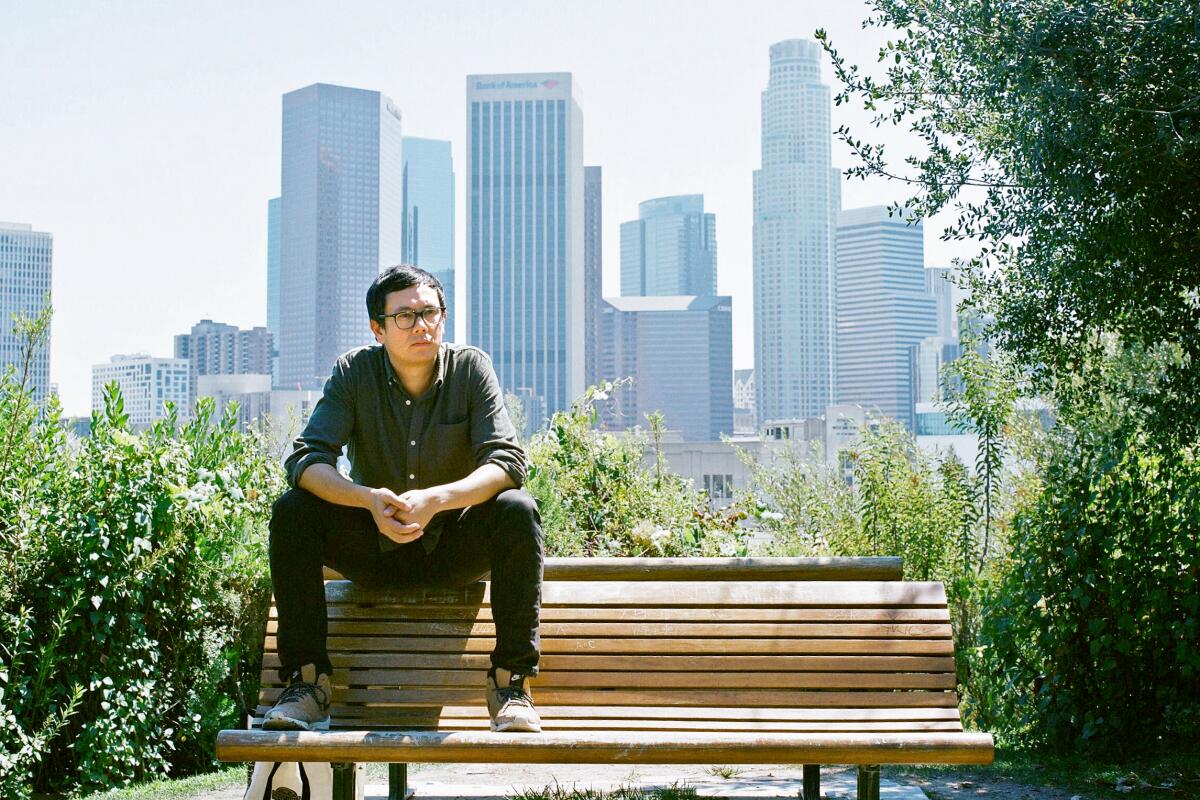
- Share via
Food brings people together: The cliché exists because it’s true.
Breaking bread is a simple act, but I’d venture that it’s possibly the world’s most effective Trojan horse. A conversation that begins about a bowl of noodles can easily segue into one about immigration or climate change or a dozen other topics. This is because food is relatable — everyone loves it and has an opinion about what’s good. And it is the easiest way, especially when you’re eating food that isn’t from your own culture, to learn about someone else’s life, history, culture or country of origin.
That’s the basic idea of our new online video series, “Off Menu,” and, in a larger sense, the work we do on the Food team: People should eat other people’s food more often because it makes the world a better place.

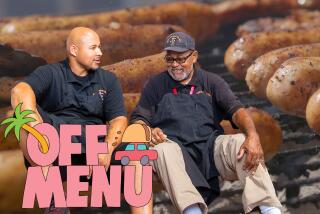
Heading to South L.A. for chicken sausage, a staple of Los Angeles’ black community | Off Menu
14:14
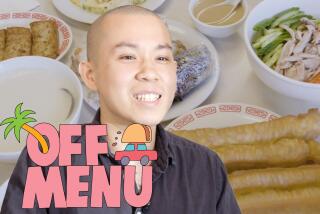
Lucas eats Chinese food in the San Gabriel Valley: dumplings, Taiwanese breakfast & more | Off Menu
11:07
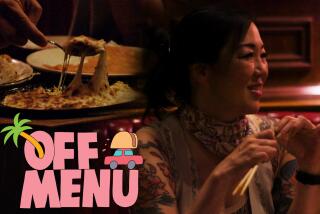
Exploring L.A.'s vibrant Koreatown with comedian Margaret Cho and Eater's Matthew Kang | Off Menu
17:35
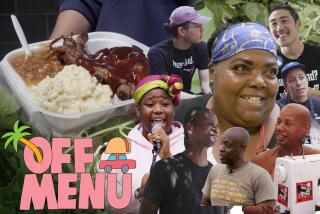
Building community through food in skid row, the epicenter of L.A.'s homelessness crisis | Off Menu
15:54
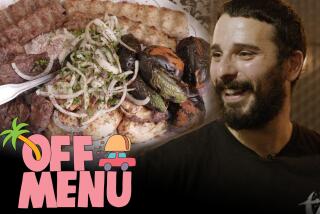
The best Armenian restaurant in L.A. is this tiny family-run kebab joint in Glendale | Off Menu
12:48
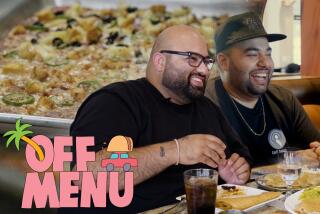
Eating chicken tikka pizza and masala dosas with the boys from L.A.'s Badmaash
15:36
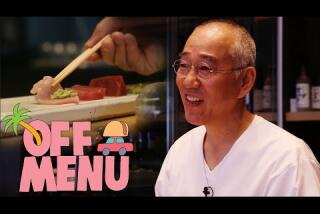
This L.A. sushi master creates a one-of-a-kind experience in his Hollywood hideaway | Off Menu
18:02
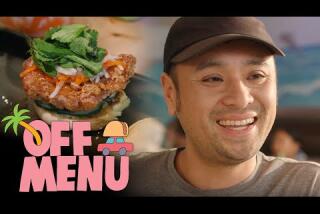
Lucas goes to Little Saigon in Orange County for incredible Vietnamese food | Off Menu

Lucas goes on a Tijuana taco crawl with L.A.’s most exciting taqueros | Off Menu

Lucas makes spicy, funky shrimp paste with Jazz from Jitlada in Hollywood's Thai Town | Off Menu
I moved to China when I was 19, on leave from college after going on academic probation and hoping for — inspiration? a kick in the ass? — to propel me back into the good graces of the school’s dean and through to graduation. I’d never connected much with the Chinese side of my heritage, but it was something I felt increasing curiosity about, mixed with a large helping of filial guilt. So I went.
And for many months, it was a bad time. I was lonely. I couldn’t speak the language. I wasn’t making the heartening, deeply felt connections I was hoping for. No one seemed nearly as interested in my personal development as I was — a rude shock for any teenager to receive.
What helped ground me, and ultimately turn the corner, was food. I ordered a 10-yuan styrofoam container of kung pao chicken from the school canteen nearly nightly because it was one of the few menu items I could read and ask for. I bought the dish so frequently I became known as “Mr. Kung Pao Chicken” on campus and at neighborhood restaurants. The grouchy chef in a permanent Beijing tuxedo (also known as a Beijing bikini — shirt pulled up to reveal an exposed, frequently large, gut) eventually started speaking a few words to me here and there and would occasionally smile as I approached. It wasn’t a lot, but it was enough.
Food columnist Lucas Kwan Peterson hosts ‘Off Menu,’ a new food show premiering Oct. 15. New episodes every Tuesday.
I became friendly with the guys who sold jianbing and yams cooked in steel barrels on the street. My co-workers at the hotel where I worked, initially wary of the strange, vaguely Chinese-looking American skulking around in the employees-only areas, warmed after we all went out, got drunk and had hot pot together. The couple of times I went on dates, I dressed to impress and went to Pizza Hut or TGI Fridays. Food became a lifeline, a language, a playing field everyone recognized and understood. And it’s been a recurring theme in my life.
Years later, working as a volunteer in rural El Salvador, I encountered similar issues with culture shock and loneliness and, as in China, food allayed and consoled and, maybe more than anything, helped create memories. I remember blisteringly hot cheese- and loroco-stuffed pupusas shared with fellow volunteers in San Vicente after our daily training sessions. And a woman in my small town who, unprompted, left me a stack of tortillas every morning when I moved into my cinder-block house. The balm of hot chicken soup or cups of atole on nights sitting in the yard with my neighbors when, due to my elementary Spanish, conversation failed.
And it was food that made me come to love Los Angeles. I had a rough initial five years after moving here from Chicago in 2006 (it takes a decade to find your rhythm here, friends and I like to joke) — bad jobs, bad relationships and a mistaken idea that simply “heading west” would provide a solution to any existential or professional problems. I got caught up in what outsiders see upon first glance: the gloss and veneer. It took me a long time to realize a fundamental truth about L.A., at least as far as transplants like me are concerned: The city doesn’t come to you; what you get out of it is directly proportional to what you put in. And the city wants you to explore. It wants you to get up, get in the car and drive.
Among the commonly recited banalities about L.A., the most common may be about sprawl. The late Jonathan Gold pushed the idea that that the city’s perceived weakness — its vast, fractured layout — may actually be its greatest strength. Instead of disparate neighborhoods in search of a unifying urban center, like Pirandello’s six characters wandering haplessly around a stage, the city is more like a series of incubators for different cultures’ cuisines. He argued that Los Angeles isn’t a great food city in spite of its geography, but because of it.
To love the city is to embrace the vastness and the diversity. It means blindly going to a neighborhood you’ve never heard of before, much less been to. It means not merely realizing but celebrating the fact that half of L.A. County is non-white. It means starting with leek and chive dumplings on one end of the San Gabriel Valley and then heading to Tarzana for Sri Lankan fish curry before ending up in West Adams for tacos.
It’s in this spirit that I created “Off Menu,” the first online video series produced at the Los Angeles Times. Over the next 10 weeks, we’ll cover a lot of ground: Hollywood, the San Gabriel Valley, Koreatown, Orange County. We’ll eat, talk shop with some of the city’s best chefs, chat up the odd celebrity and even leave the country for some tacos.

Does the world really need another food show?
I think so, despite the barrage of food- and cooking-related content that’s hit our laptops and streaming devices in the four years since I produced my first food show for Eater. Because while I love “Top Chef Jr.” and the easy serenity of watching British people puzzle over a mille-feuille as much as anyone, what we’re aiming for with “Off Menu” is different.
A perfectly crimped soup dumpling, a volcano of bubbling kimchi stew or an overstuffed machaca burrito are wonders to behold, but they’re secondary to the stories of the people who make those things. And that, ultimately, is the goal: to focus on the people as much as the food.
More to Read
Eat your way across L.A.
Get our weekly Tasting Notes newsletter for reviews, news and more.
You may occasionally receive promotional content from the Los Angeles Times.











